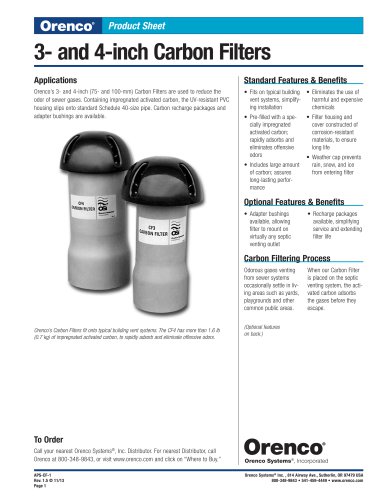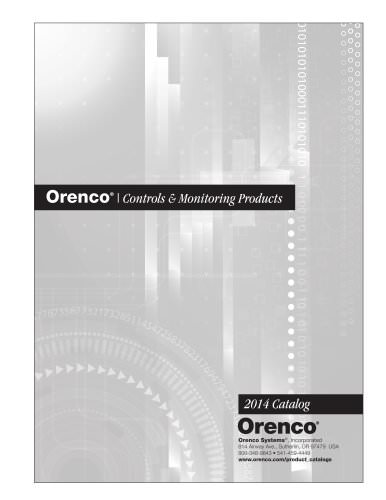 Website:
Orenco Systems
Website:
Orenco Systems
Catalog excerpts
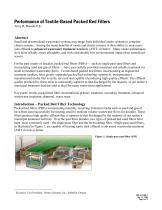
Performance of Textile-Based Packed Bed Filters Terry R. Bounds P.E.∗ Abstract Small and decentralized wastewater systems may range from individual onsite systems to complete cluster systems. Among the many benefits of onsite and cluster systems is their ability to treat septic tank effluent to advanced wastewater treatment standards (AWT) or better. Many onsite technologies do it more reliably, more affordably, and with considerably less environmental impact than centralized sewers. For the past couple of decades, packed bed filters (PBFs) — such as single-pass sand filters and recirculating sand and gravel filters — have successfully provided consistent and reliable treatment for small to medium wastewater flows. Textile-based packed bed filters, incorporating an engineered treatment medium, have greatly expanded packed bed technology options by incorporating a manufactured media that is easily serviced and capable of producing high quality effluent. The effluent quality produced by these units is consistently superior to that discharged by the majority of our nation’s municipal treatment facilities and is ideal for many water-reuse applications. Keywords: textile, packed bed filter, decentralized, primary treatment, secondary treatment, advanced wastewater treatment, dispersal, water reuse Introduction – Packed Bed Filter Technology Packed bed filters (PBFs) incorporating naturally occurring treatment media such as sand and gravel have been used successfully for treating small to medium volume wastewater flows for decades. These filters produce high quality effluent that is superior to that discharged by the majority of our nation’s municipal treatment facilities. Over the past three decades, two types of packed bed sand filters have been most commonly used—the single-pass filter and the recirculating filter. Single-pass sand filters, as illustrated in Figure 1, are capable of treating septic tank effluent to advanced wastewater treatment (AWT) levels or better. Figure 1: Single-pass sand filter (ISF) Executive Vice President, Orenco Systems, Inc., Sutherlin, Oregon NTP-FLT-TRB-1 Rev. 1.1, 11/02 Page 1 of 12
Open the catalog to page 1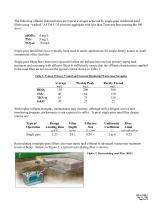
The following effluent characteristics are typical averages achieved by single-pass residential sand filters using "washed" ASTM C-33 concrete aggregate with less than 2 percent fines passing the 100 Single-pass sand filters have typically been used in onsite applications for single-family homes or small commercial/office facilities. Single-pass filters have been most successful when the influent has received primary septic tank treatment and screening with effluent filters to sufficiently ensure that the effluent characteristics applied to the sand filter do not exceed the typical criteria...
Open the catalog to page 2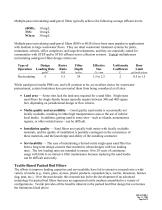
Multiple-pass recirculating sand/gravel filters typically achieve the following average effluent levels: cBOD5: TSS: NO3-n: Multiple-pass recirculating sand/gravel filters (RSFs or RGFs) have been most popular in applications with medium to large wastewater flows. They are ideal wastewater treatment systems for parks, restaurants, schools, office complexes, and large developments, and they are especially suited for communities with STEP and/or STEG effluent sewer collection systems. Typical multiple-pass recirculating sand/gravel filter design criteria are: Type of Operation Recirc Ratio...
Open the catalog to page 3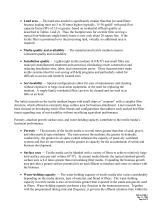
• Land area — The land area needed is significantly smaller than that for sand filters because loading rates are 5 to 30 times higher (typically, 15-30 gpd/ft2 with peak flow capacity/factor (PF) of 2.0 or greater, based on residential effluent quality as described in Tables 1 and 2). Thus, the footprint area for a textile filter serving a typical four-bedroom single-family home is now only about 20 square feet. If the textile filter is positioned over the processing tank, virtually no additional area is required. • Media quality and availability — The manufactured textile medium ensures...
Open the catalog to page 4
filter and ultimate effluent quality. In Figure 3, complex fiber structure and void space of textile fibers is compared to that of typical 0.30-mm and 1.5-mm sand particles. Figure 3: Textile fiber porous structure, relative to sand and gravel particles Performance of Textile-Based Packed Bed Filters In the past three years, performance evaluations have been conducted and reported on by facilities such as the University of California, Davis Campus; NSF International; and NovaTec Consultants, Inc. of Vancouver, British Columbia. The University of California Davis study (Leverenz, et al.,...
Open the catalog to page 5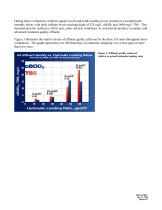
During these evaluations, influent organic levels and solids loading levels reached or exceeded peak monthly limits, with daily influent levels reaching highs of 525 mg/L cBOD5 and 1600 mg/L TSS. This demonstrated the resiliency of this unit, under adverse conditions, to consistently produce secondary and advanced treatment quality effluent. Figure 5 illustrates the relative levels of effluent quality achieved by the three AX units throughout these evaluations. The graph represents over 360 data days of composite sampling over a time span of more AX Effluent Quality vs. Hydraulic Loading...
Open the catalog to page 6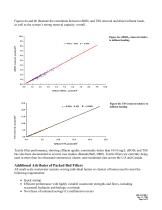
Figures 6a and 6b illustrate the correlation between cBOD5 and TSS removal and direct influent loads, as well as the system's strong removal capacity, overall. Figure 6b: TSS removal relative to influent loading Textile filter performance, showing effluent quality consistently better than 10/10 mg/L cBOD5 and TSS has also been documented in several case studies (Bounds/Ball, 2000). Textile filters are currently being used in more than two thousand commercial, cluster, and residential sites across the U.S and Canada. Additional Attributes of Packed Bed Filters All small-scale wastewater...
Open the catalog to page 7
• Consistent trouble-free operation; low maintenance (e.g. annual service call recommended; on-site routine service time 1 hour ±) • Ease of maintenance (components should be easily accessible and serviceable) • Low energy consumption • Adequate storage during power outages (normally 24 hours or more at typical flows) • Recoverable and expandable • Reliability in providing the level of treated water required to final dispersal treatment processes Packed bed filters are inherently well suited for small-scale wastewater systems. They meet and typically exceed the above-listed requirements,...
Open the catalog to page 8All Orenco Systems catalogs and technical brochures
-
Prelos™ 1000 Processor
6 Pages
-
PrelosProcessor
4 Pages
-
Prelos™
2 Pages
-
ClickTight™ Controls Package
1 Pages
-
3- and 4-inch Carbon Filters
2 Pages
-
PVC Pump Basins
2 Pages
-
Orenco ® Fiberglass Basins
2 Pages
-
Stormwater Catch Basins
2 Pages
-
Controls and Monitoring Products
48 Pages
-
T-Max Storage Tanks
2 Pages
-
Wastewater Pumping Products
60 Pages
-
Orenco Full Product
102 Pages
Archived catalogs
-
leach field MANIFOLD
8 Pages
-
pump station PROSTEP
6 Pages
-
pump station UFI
1 Pages






